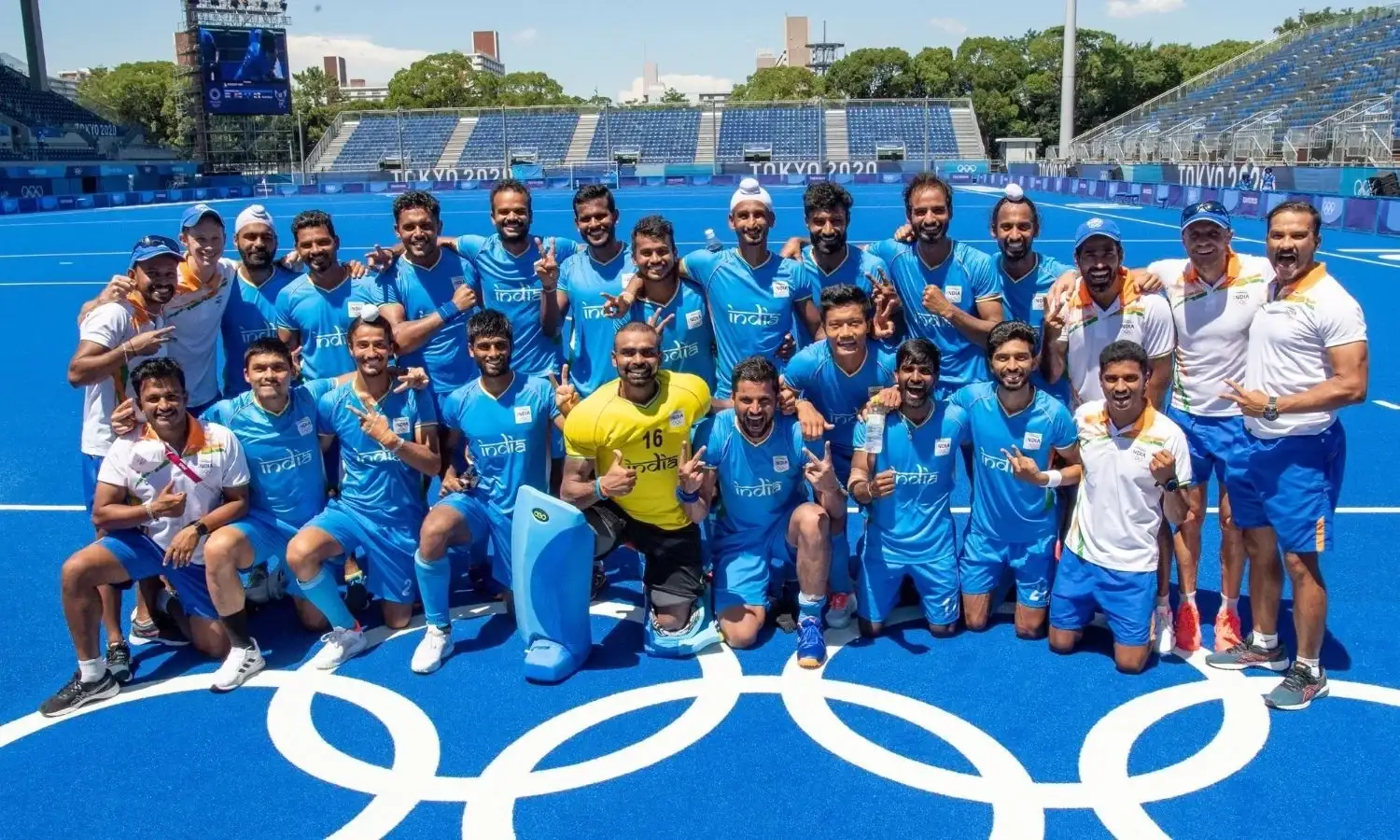As the Paris 2024 Olympics approach, hockey, both field and ice variations, promises to deliver fast-paced action, razor-sharp skill, and intense competition. Renowned for its combination of speed, agility, and teamwork, hockey continues to captivate audiences worldwide. Whether on grass or ice, hockey stands out as a thrilling display of athleticism, strategy, and sheer determination, with players vying for Olympic glory.
The Excitement of Field Hockey
Field hockey, one of the oldest team sports, has its origins dating back thousands of years. Known for its speed, precision, and demanding physical endurance, field hockey has a rich history in the Olympic Games, with its first appearance in the 1908 London Olympics. It has since become a mainstay, drawing teams from all over the world to compete for Olympic medals.
Key Elements of Field Hockey:
-
Speed and Agility: Field hockey is played on a large rectangular field, with teams sprinting across the turf at high speeds. Players need to have exceptional footwork and the ability to change direction rapidly. With 11 players on each team, the constant movement requires sharp reflexes and quick thinking.
-
Stick and Ball Control: Players use curved sticks to control a small, hard ball, passing it between teammates, dribbling, and shooting with precision. Mastering stick-handling is crucial for maintaining possession and creating scoring opportunities.
-
Strategic Play: Field hockey requires a deep understanding of tactics and teamwork. Teams must strike a balance between offense and defense, with coaches often employing different formations and strategies to outmaneuver their opponents. Coordinated passing and movement are essential for advancing the ball downfield and finding gaps in the defense.
The Rise of Women’s Field Hockey
Women’s field hockey has gained significant momentum over the years. Making its debut in the 1980 Moscow Olympics, it has since grown in global stature, with nations like the Netherlands, Australia, Argentina, and Germany dominating the sport. The women’s game is known for its speed and technicality, with players showcasing remarkable skill and finesse.
At Paris 2024, women’s field hockey will continue to highlight the growing popularity and competitive nature of the sport. Teams will bring their A-game to compete for the coveted Olympic gold, showcasing teamwork, tactical brilliance, and impressive athleticism.
The Physical and Mental Demands of Field Hockey
Field hockey players endure grueling training regimes to prepare for Olympic competition. The sport demands a combination of cardiovascular endurance, strength, and mental fortitude. Some aspects of the preparation include:
-
Endurance Training: Field hockey matches last 60 minutes, with four 15-minute quarters. Players must maintain a high level of intensity throughout, making endurance a critical aspect of their training.
-
Strength and Conditioning: Hockey players focus on strength-building exercises to improve their ability to tackle, shoot with power, and recover quickly after sprints.
-
Mental Toughness: Like many fast-paced sports, field hockey requires quick decision-making under pressure. Players must remain focused, adapt to the flow of the game, and work cohesively as a team, even in high-pressure situations.
The Thrill of Ice Hockey
Ice hockey, on the other hand, brings an entirely different dynamic to the Olympic arena. Played on a smaller surface but at breakneck speed, ice hockey is known for its physicality, fast transitions, and electrifying goals. It made its Olympic debut in 1920 and has since become a premier event, especially in the Winter Olympics.
Key Features of Ice Hockey:
-
High Speed and Intensity: Ice hockey is one of the fastest team sports, with players gliding across the rink at incredible speeds. The game demands excellent skating abilities, lightning-fast reflexes, and seamless coordination.
-
Physical Play: Ice hockey is renowned for its physicality. Body checks hit along the boards, and battles for puck possession are common, adding to the sport’s intense nature. However, despite the physical challenges, skill and finesse remain at the forefront of the game.
-
Puck Handling and Shooting: Players use sticks to control a small rubber puck, passing it to teammates and shooting at the opponent’s goal. The speed at which the puck moves and the tight angles players must work with make puck handling and accurate shooting critical skills.
Iconic Olympic Ice Hockey Moments
Over the years, ice hockey has delivered some of the most memorable Olympic moments. The "Miracle on Ice" at the 1980 Lake Placid Olympics remains one of the greatest underdog stories in sports history, where the U.S. men’s team defeated the heavily favored Soviet Union team, going on to win the gold medal. Such moments demonstrate the unpredictability and excitement that ice hockey brings to the Olympic Games.
Team Tactics and Player Roles
Both field and ice hockey are deeply rooted in team tactics, with players having specialized roles. Understanding the nuances of these roles is crucial for success:
-
Forwards: In both versions of hockey, forwards are primarily responsible for scoring. They must have strong stick skills, the ability to make quick decisions, and a knack for finding space to create scoring opportunities.
-
Defenders: Defense is vital in stopping the opposition’s attacks. Defenders must be strong, quick, and tactical, knowing when to challenge for the ball or puck and when to hold their positions.
-
Goalkeepers: Often the last line of defense, goalkeepers in both field and ice hockey are pivotal. They need lightning reflexes, mental toughness, and an ability to read the game to make crucial saves.
The Role of Technology in Hockey
Technology has significantly impacted both field and ice hockey, improving everything from player performance to officiating:
-
Video Refereeing: Video Assistant Refereeing (VAR) has become a key component in field hockey, ensuring that goals and key decisions are correctly adjudicated. Similarly, in ice hockey, video reviews help resolve disputed goals or controversial plays.
-
Performance Analytics: Teams use data analytics to monitor player performance, track movement patterns, and develop tactical strategies. These insights allow coaches to make data-driven decisions, improving team effectiveness.
-
Equipment Innovation: Both versions of hockey have benefited from advances in equipment. Lighter, more durable sticks, improved protective gear, and enhanced footwear or skates contribute to players’ performance and safety.
Hockey’s Global Impact
Hockey is a truly global sport, played and loved by millions around the world. Field hockey has its strongest roots in Europe, Asia, and Australia, with countries like India, Germany, the Netherlands, and Australia dominating the field. Ice hockey, while particularly popular in North America and parts of Europe, is gaining a larger following globally, with countries like Russia, Canada, the U.S., Sweden, and Finland consistently among the top teams.
Conclusion
As hockey takes center stage at the Paris 2024 Olympics, fans can expect breathtaking moments, strategic brilliance, and world-class athleticism. Both field and ice hockey demand a high level of skill, speed, and teamwork, creating thrilling matches that leave audiences on the edge of their seats.
Whether it’s the fast-paced, tactical elegance of field hockey or the high-octane, physical battles of ice hockey, the sport promises unforgettable experiences at the Olympic Games. The passion, skill, and determination of the players will shine through, creating iconic moments that will be remembered long after the final whistle is blown.







